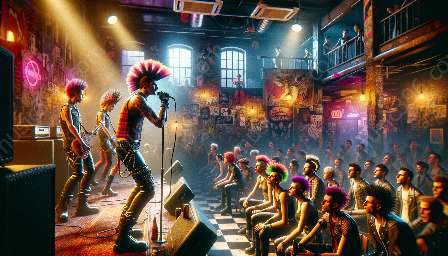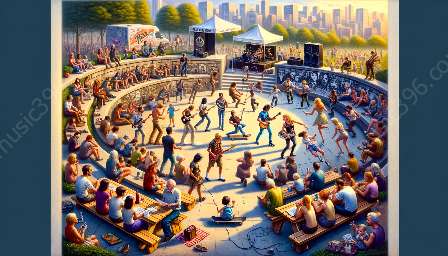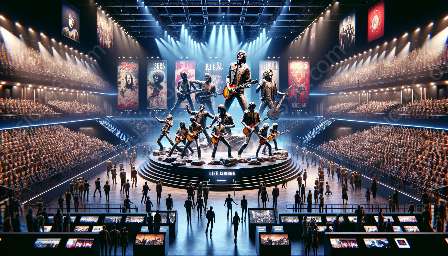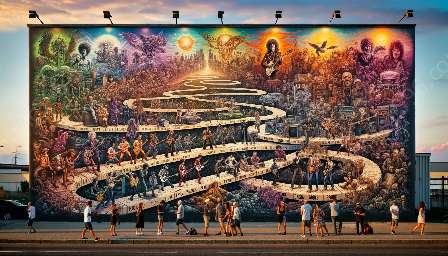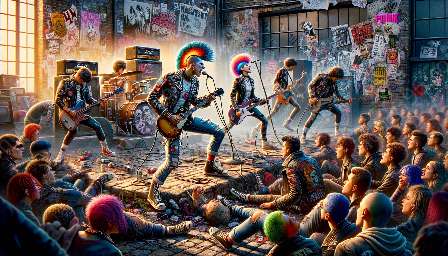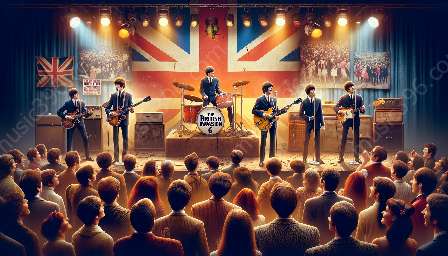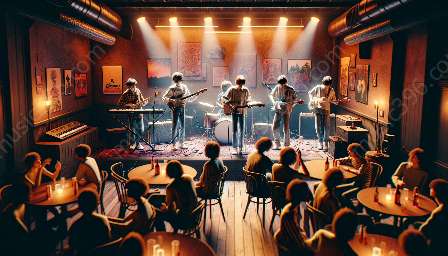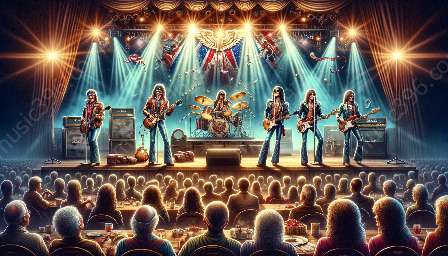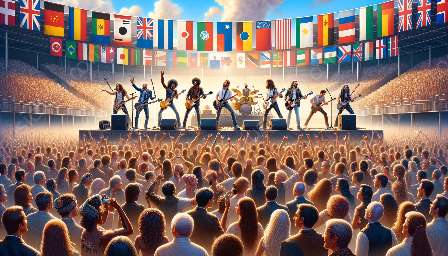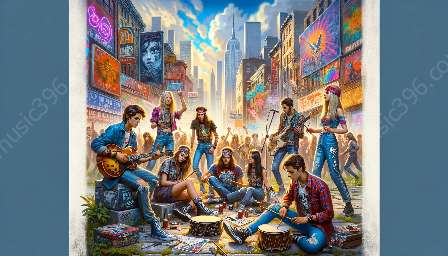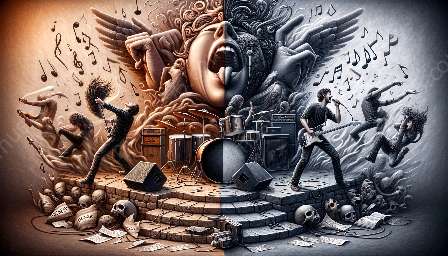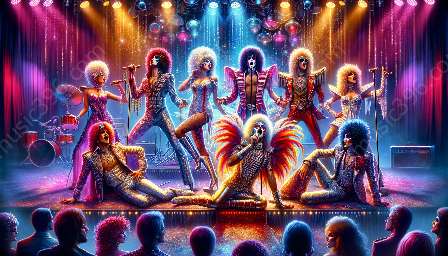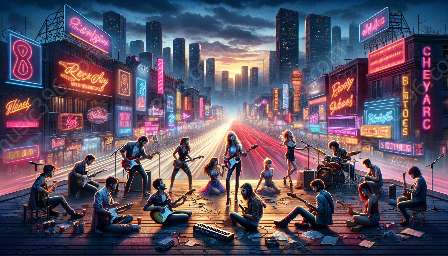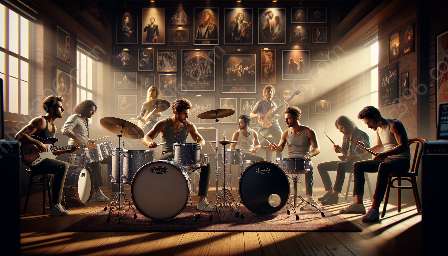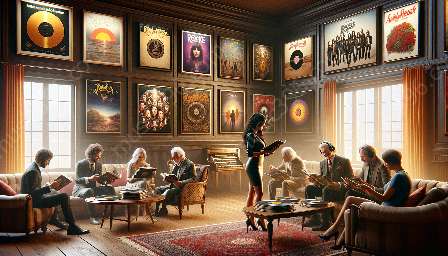Rock music has long been a significant force in shaping popular culture, influencing not only the music industry but also art and literature. In this article, we will explore the representation of rock music in art and literature and its impact on popular culture.
Rock Music as a Cultural Phenomenon
Rock music emerged as a genre in the mid-20th century and quickly became a defining feature of popular culture. Its rebellious and boundary-pushing nature made it a powerful force that transcended mere entertainment, often serving as a vehicle for expressing social and political ideologies. As a result, rock music has left a lasting imprint on art and literature, inspiring creative works that reflect the ethos and energy of the genre.
Representation of Rock Music in Art
Artists have frequently turned to rock music as a subject matter, using various mediums to capture the essence and impact of this musical movement. Iconic album covers, such as Pink Floyd's The Dark Side of the Moon and The Beatles' Abbey Road, have become celebrated pieces of visual art in their own right. Additionally, numerous painters, photographers, and sculptors have sought to portray the spirit of rock music through their work, often delving into the subcultures and personalities associated with the genre.
Rock Music in Literature
Literature has also been deeply influenced by rock music, with many authors drawing inspiration from its themes, imagery, and societal impact. From rockstar biographies and autobiographies to novels that capture the essence of the rock music era, literature has provided a platform for exploring the complex narratives and emotions associated with the genre. Books such as Patti Smith's Just Kids and Haruki Murakami's Norwegian Wood have captured the cultural zeitgeist of their respective eras, intertwining rock music with literary expression.
The Influence of Rock Music on Popular Culture
Rock music's representation in art and literature has not only contributed to the enrichment of these creative fields but has also played a pivotal role in shaping popular culture. The genre's ability to provoke thought, challenge social norms, and foster a sense of belonging has permeated various aspects of society, from fashion and visual arts to film and advertising.
Rock Music and Counterculture
Rock music's representation in art and literature often intersects with the concept of counterculture, providing a platform for alternative voices and perspectives. This has led to the emergence of subcultures that challenge established norms and inspire creative expression beyond the confines of mainstream culture. The rebellious spirit of rock music continues to fuel a sense of defiance and individualism, influencing not only art and literature but also societal attitudes and values.
Conclusion
In conclusion, rock music's representation in art and literature serves as a testament to its enduring impact on popular culture. From visual art to literary works, the genre has inspired creative expression and offered a platform for exploring complex societal themes. By delving into the representation of rock music in art and literature, we gain a deeper understanding of its cultural significance and its ability to transcend musical boundaries, leaving an indelible mark on the cultural landscape.





